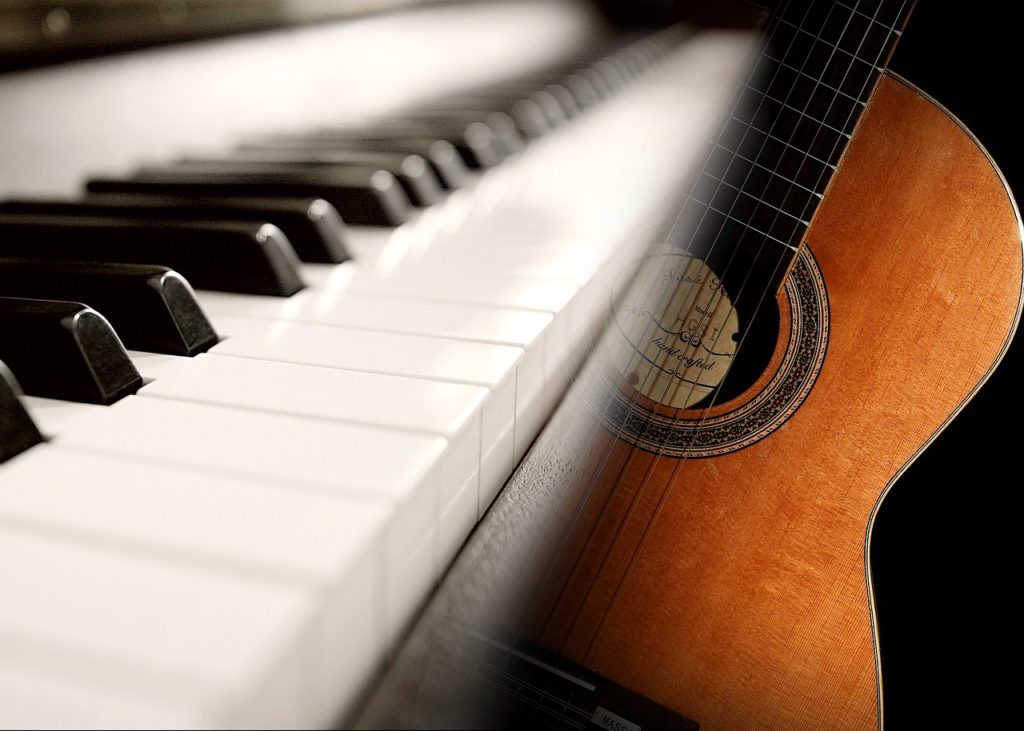The color coded keyboard guide helps reduce mix-ups. I made the above guide in a spreadsheet program. I sized the cells by trial and error. That is, I kept printing and resizing guides until I found the cell size that fit the piano keys right.
Write the letter of each key on the appropriately colored cell.
- C = orange
- D = gray
- E = red
- F = pink
- G = green
- A = purple
- B = blue
You can input the color values into the spreadsheet cells to match the colors with the score. The black cells line up with the black keys, this helps the student to line up the guide on the keyboard at home.
When you color code the musical instrument, fingers, and the score, it pulls everything together. The student will be able to read the blue note, using the blue finger to play the blue key.


